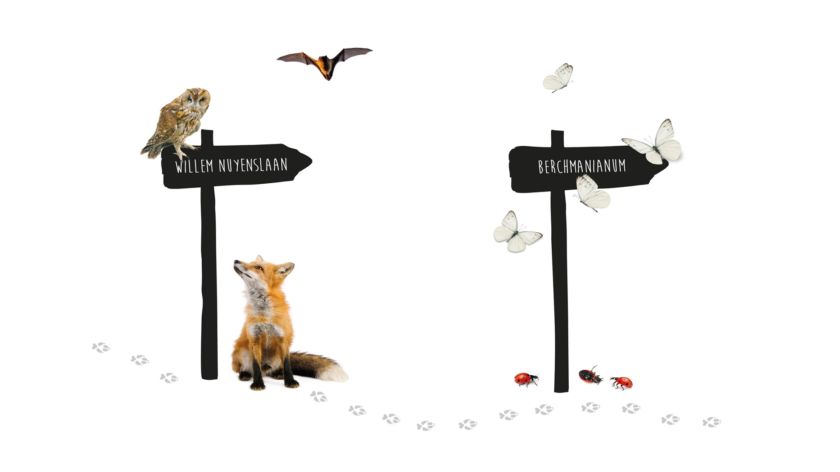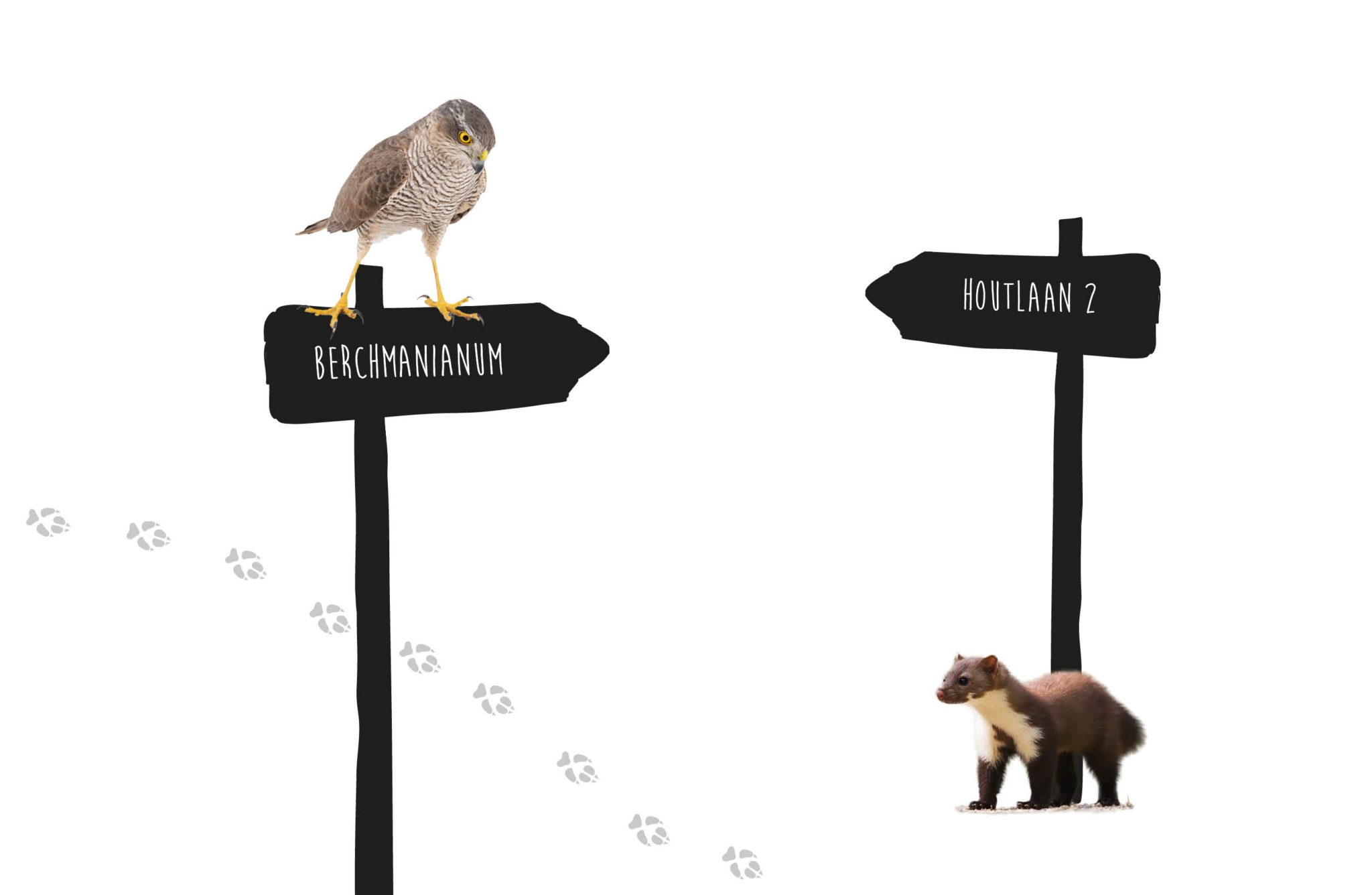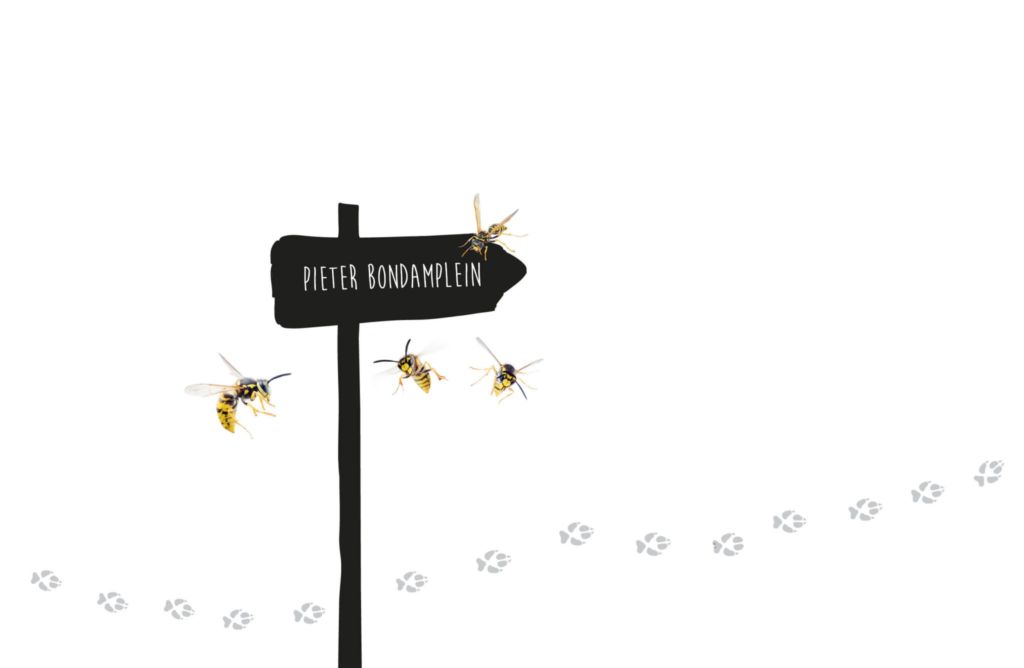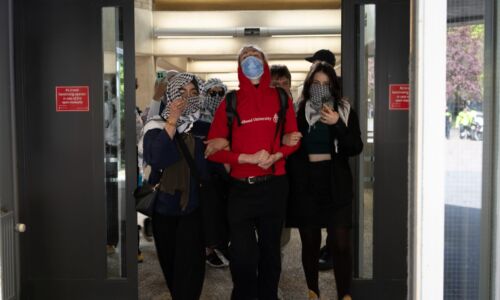After nightfall, these animals rule the Campus
-
 Images: Getty images (edited)
Images: Getty images (edited)
When the students go home at the end of the day, the Campus comes to life with wildlife - stone martens, mice and birds. Some species we protect, others we try to control at all costs.
You may not be aware of this on a daily basis, but Radboud University Campus happens to be the territory of all kinds of animals. To find out more about the exceptional animals living here, we contacted Ferry Soetekouw from the Department of Property Management. As project leader of the redevelopment of the woods around the Berchmanianum, it was his task to map which species walk, fly and crawl over the grounds.
We met Soetekouw at the Elinor Ostrom building for an animal tour around Campus. But before we leave, Soetekouw has to make a phone call. ‘Can you get the ladder set up?’ he asks a colleague at the Houtlaan location. ‘I’ve promised the ecologist to check on the stone martens.’
An inventory of the animal species living in the woods was a requirement for obtaining permission for construction activities on Campus. ‘We had to know what species to take into account when building the new Faculty of Social Sciences, renovating the Berchmanianum and redesigning the woods.’
Bat boxes
On the Willem Nuyenslaan, which runs along the woods, Soetekouw stops. He takes out his phone and scrolls through the lengthy document compiled by ecologists about the animals living in the area. ‘We have starlings, sparrows and blackbirds, of course, but they don’t require any special measures.’ A small selection from the other species that live in the woods: Alpine newts, foxes and owls.

From the forest edge, Soetekouw looks at the inconspicuous boxes, a few metres up in the trees. Bat boxes. ‘We have a few different species of bats here: dwarf bats, common noctules and Serontine bats.’ It’s hard to assess what bats need precisely, explains Soetekouw. For example when it comes to the placement of the bat boxes: ‘It’s not an exact science. You don’t know for sure which spot is ideal.’
The first ‘wasp traps’ are placed in early April.
Soetekouw turns left towards the Berchmanianum. On our right we see a wooden insect hotel hanging near a ploughed field. ‘It looks a bit bare now, but this is going to be a flower meadow.’ The hotel was designed as attractive four-star accommodation for all kinds of insects this spring and summer: from bees and butterflies to ladybirds and earwigs.
While these insects are treasured, on the nearby Pieter Bondamplein, preparations are underway to combat a related species. An insect that can cause a lot of damage and is therefore actively controlled: the wasp. The first ‘wasp traps’ are placed in early April. It’s important to set them up early, to attract wasp queens and prevent them from building new nests.
Of all pests, it is however not the wasp, but the mouse that is the main focus of pest controllers. ‘A mouse can go through a hole the diameter of a pencil. And it only needs 3 to 5 grams of food per day to survive. At Radboud University, people can eat and drink anywhere. All doors and windows open and close.’ Ingrid Roelofsen, contract manager for Cleaning, Waste and Pest Control at the Property Management Department, sums up the situation. What she means is that Radboud University is an ideal environment for mice. In practice, the most effective way to control mice populations is not to leave waste and food left-overs lying around. Students and staff members can help by putting waste in the waste bins.

Hawk nest
One of the ways mice are caught on Campus is with the ‘radar’: a white plastic tube on the floor, with motion sensors that go off when a mouse passes through it. This causes the red shutters at the ends of the tube to fall shut and the mouse can’t escape. It also releases CO2, which makes the mouse unconscious and ultimately kills it.
We’re heading once more in the direction of the Berchmanianum through the woods. On the right a path leads deeper into the woods, but it’s closed off. This piece of Campus nature is fenced off, because a hawk nest has been spotted there. ‘In February, March and April, there shouldn’t be too much activity around the nest, so the hawk can hatch her eggs if she wants,’ says Soetekouw.
‘It was one big mess of excrement and litter left by the stone martens’
On the edge of the ‘hawk wood’ a special shelter has been built for the stone martens the ecologists found. They were living in the attic of an outbuilding of the Berchmanianum, on the Houtlaan 2. ‘These used to be the fathers’ apartments.’ Once they left, the stone martens moved in. Now there’s a bicycle shed on the ground floor. Soetekouw climbs up the ladder prepared for him, opens a wooden hatch in the roof of the bicycle shed, and climbs up into the attic. ‘It was one big mess of excrement and litter left by the stone martens.’ He walks through the dusty dark space under the roof. The space was cleaned last year, but the stone martens are still welcome. They’ve been given a specially designed wooden box with glass and rock wool. Ferry Soetekouw looks for tracks, but the stone martens don’t seem to have found their way upstairs since the renovation.
Outside, on the car park, measures have also been taken to accommodate Campus animals. Soetekouw points to the street lights. ‘We now use LED lights that shine downwards, instead of up. It’s better for the bats. And we only need the light below anyway.’
Nature useful to humans
Why do we exterminate mice, but protect bats? Why do we hang bat boxes in the woods, while waging a battle against one of its close relatives?
This is due to our dominant perspective on non-human nature, says Martin Drenthen, Nature Philosopher at the Institute for Science in Society. ‘People tend to assess nature based on how useful it is to them.’
The first efforts to protect nature, in the late nineteenth century, mainly focused on human needs. Nature had to be preserved so people could reap its fruits in the long term. The second phase in nature conservation, in the early twentieth century, was also motivated by human need: ‘Namely the need to enjoy unspoilt nature.’ And to do this we had to protect nature against ourselves.
It was only many years later that the concept of nature conservation simply to protect life became fashionable. ‘Respect for nature and good stewardship, these concepts are more important today.’
An area of forest for the hawk, special light for the bats, a shelter for the stone marten. These are examples of small adjustments people can make to make room for animals.
‘Nearly all landscapes are not only inhabited by humans, but by other species too. Bats are a particularly good example. We live side by side, yet rarely meet. They’re mainly active at night, when we’re not around. What’s relevant to us is irrelevant to them. Our lives barely overlap at all. We can easily afford to take them into consideration. This is more difficult when it comes to species that cause us inconvenience. But there too, the challenge is to find a way to co-exist and understand that people also sometimes have to make compromises.’



